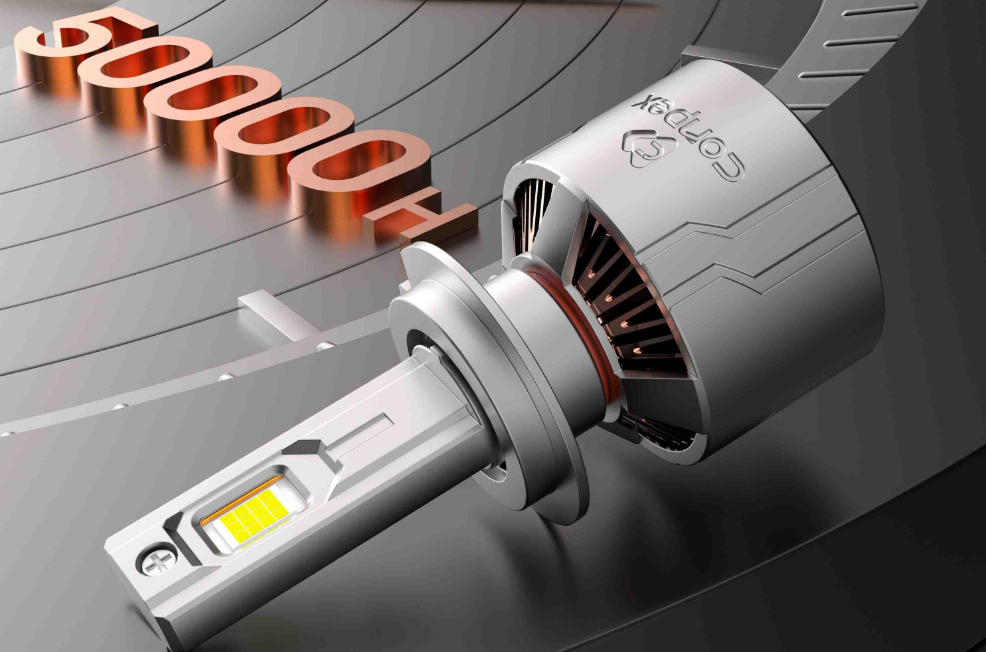Understanding the Importance of Housing Materials in Automotive LED headLights
14 July 2025
by CONPEX
Reading volume: 1592
When it comes to automotive LED headlights, the external housing material plays a crucial role in ensuring performance, durability, and longevity. The right housing material not only protects the internal components of the LED light but also impacts factors such as heat dissipation, impact resistance, and waterproofing.
In this article, we’ll explore the different materials commonly used for the housing of automotive LED lights, and why choosing the right material is critical for optimal performance.

1. Aluminum: The Most Common and Reliable Choice
Aluminum is by far the most widely used material for automotive LED light housings, and for good reason. Here’s why aluminum is the preferred choice:
1.1 Excellent Heat Dissipation
One of the most important functions of the housing material is to dissipate the heat generated by the LED headlights. Aluminum is an excellent conductor of heat, which helps to keep the LED chips cool during operation.
Overheating is one of the main causes of LED failure, and aluminum housing helps to prevent thermal damage by efficiently transferring heat away from the light source.
1.2 Lightweight and Durable
Aluminum is lightweight yet highly durable, making it easy to handle during installation, while still offering strong protection for the internal components of the LED light.
It’s resistant to corrosion, especially if treated with protective coatings, which increases its lifespan even in harsh outdoor environments.
1.3 Aesthetic Appeal
Aluminum has a sleek, modern finish and can be easily molded into various shapes. This makes it a popular choice for high-end automotive lighting solutions that require both functionality and aesthetic appeal.
2. Die-Cast Aluminum: For Added Strength and Precision
While standard aluminum is great, die-cast aluminum is an even better option for certain automotive LED headlights.
2.1 High-Strength and Precision
Die-casting involves pouring molten aluminum into a mold to create complex shapes with high precision. This method allows manufacturers to create stronger and more intricate housings for automotive lights.
Die-cast aluminum housings provide extra durability, ensuring that the light can withstand impacts, vibrations, and external pressure.
2.2 Improved Cooling Performance
Due to its structure, die-cast aluminum can have better heat dissipation capabilities compared to regular aluminum, making it especially beneficial for high-performance LEDs that generate a lot of heat.
3. Plastic: Lightweight and Cost-Effective
While aluminum is commonly used for high-end automotive LED lights, plastic is another material that’s widely used in more affordable LED lighting solutions.
3.1 Lightweight and Affordable
Plastic housings are significantly lighter and more affordable than metal options, making them a popular choice for budget-friendly automotive lights.
However, plastic may not offer the same level of heat dissipation or protection as aluminum, which is why it’s often used in lower-power LED lights or indoor lighting solutions.
3.2 Easy to Mold
Plastic can be easily molded into a wide range of shapes and designs, making it ideal for complex or decorative housings. It allows for greater design flexibility, which is why it’s commonly used in aesthetic lighting applications.
3.3 Potential Issues with Heat
While plastic is lightweight and cost-effective, it doesn’t dissipate heat as well as aluminum. Over time, if the plastic housing is not well-ventilated, it may cause the LED to overheat, leading to reduced lifespan or malfunction.
4. Zinc Alloy: The Ultimate Protection for Tough Conditions
For heavy-duty and off-road vehicles, zinc alloy is sometimes used as a housing material for automotive LED lights due to its superior strength and resistance to extreme conditions.
4.1 Superior Durability
Zinc alloy is highly resistant to rust and corrosion, making it ideal for vehicles exposed to harsh weather conditions, saltwater, or muddy environments.
It offers high impact resistance, making it a great choice for off-road vehicles that are subjected to vibrations, bumps, and impacts.
4.2 Heat Resistance
While zinc alloy is not as efficient at dissipating heat as aluminum, its robust nature ensures that it provides a high level of physical protection for the internal components, particularly in extreme conditions.
Conclusion: Choosing the Right Housing Material for Automotive LED Lights
The housing material of automotive LED headlights is essential for determining performance, durability, and aesthetic appeal. While aluminum remains the most common and reliable choice for most applications, options like die-cast aluminum, plastic,and zinc alloy, each offer unique advantages depending on the vehicle type, intended use, and environmental conditions.
When choosing the right LED light for your car, it’s crucial to consider the material of the housing, as it directly impacts the light’s longevity, reliability, and overall performance. Always select a light that not only looks great but also delivers consistent, high-quality performance in any driving condition.






